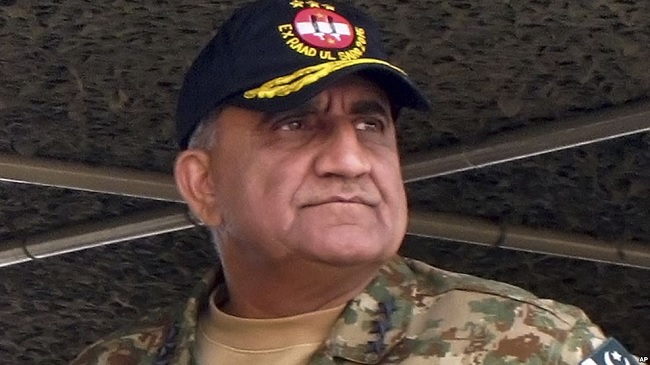By General Mirza Aslam Beg – Former (COAS)
Pakistan is passing through very turbulent times, demanding from our new military leadership deep reflection, to evolve policies and plans to face the challenges. The change of command has taken place in a routine manner. The outgoing COAS gave full advantage to the incoming COAS to select and promote his new team and engage in a series of briefings so that he could issue the policy directives for training and operational preparedness. The main challenges are:
- The chaotic conditions on our North Western Borders and the emerging threat of Daēsh in Afghanistan.
- Indian intransigence along the Line of Control and the on-going freedom struggle of the people of Occupied Kashmir.
- The curse of terror and corruption.
So far our army has met these challenges in a befitting manner, making great sacrifices. This was possible, because, after the 1971 debacle, army pulled itself up, removing the weaknesses, by implementing a comprehensive ‘Development and Modernizing Plan for the year 2000 and beyond.’ The desired capability was achieved with unflinching and no strings attached support of the Chinese, enabling the army high command to develop the “Offensive Defence Doctrine,” based on ‘full mobilization for war’ within a short period of two days only. This meaningful capability was something that needed to be demonstrated to the Pakistani nation, to our friends as well as to our enemies, to make them understand our real military power potential.
The Zarb-e-Momin maneuvers of 1989 were held, involving over 300,000 troops, witnessed by twenty three foreign military delegates and one hundred young Pakistani journalists were imbedded into each unit and formation. Fourteen new concepts were practiced, including the ‘land-air warfare’ concept, being the high mark of the maneuvers. We thus came a long-way meeting the challenges ahead. The present day challenges now demand a thorough review of our “Development and Modernization Plan-2000” and to evolve a new plan for the year 2030 and beyond. This is the main task for the new military leadership.
In order to achieve this purpose, the army high command to a great extent, must disengage itself from political and diplomatic commitments and concentrate on development and evolution of new concepts of fighting the emerging challenges. The threat on our North Western borders and the emergence of Daēsh in Afghanistan is the most serious threat, after Crusade-1 of 2001. This is the threat, which Turkish President also pointed out, on his visit to Pakistan.
Some two years back there were only a few pockets of Daēsh in Afghanistan and now their number is reported to be over 15000, mainly consisting of Pakistani exiles in Afghanistan (over 350,000), who need a job, for which they are being paid US$ 400-500 monthly salary.
Their number is increasing by the day. This emerging threat can be handled only by Afghan Taliban, but they are being restrained to their hide-outs, by American and NATO airpower. And that appears to be the design to turn Afghanistan into a Daēsh haven with disastrous consequences for Pakistan and the neighbouring countries. If that be so then no doubt, Crusade-2 has already begun.
Now, therefore, USA has declared India an “Important Defense Partner” like Israel, UK and Australia, India would thus be getting high-tech weapons, equipment and electronic warfare facilities, posing very serious threat to Pakistan. The situation therefore demands that the government of Pakistan must take immediate action now to establish the writ of the government in areas of Swat, Dir ,Bajaur, FATA, Waziristan and Balochistan the areas cleared by the Army, so that the army could concentrate acquiring necessary capabilities and develop plans to meet the challenges and the political government with the help of Russia, China and Iran to find the answer to Daēsh threat in Afghanistan.
Daēsh threat is real and a matter of great concern to our neighbouring countries, who must bond into a partnership to defeat this threat. As our military capabilities are developed to meet the challenges of the year 2030 and beyond, there would be the need to demonstrate our military power potential to our nation and the world at large, by holding Zarb-e-Momin-2 maneuvers in 2018. It is essential to fortify the military base, which forms the bed-rock on which the CPEC structure now is being developed. It is expected that soon two new projects would also be undertaken, such as the oil pipe-line from Karachi to Kashgar, and an “Inland Riverine Transportation System” along river Indus, from Havelian to Karachi, giving a new face to Pakistan, and a very bright future.
All machinations of our enemies will be defeated Insha Allah, as our people, the armed forces and the friendly neighbours stand as one to face the challenges ahead.


